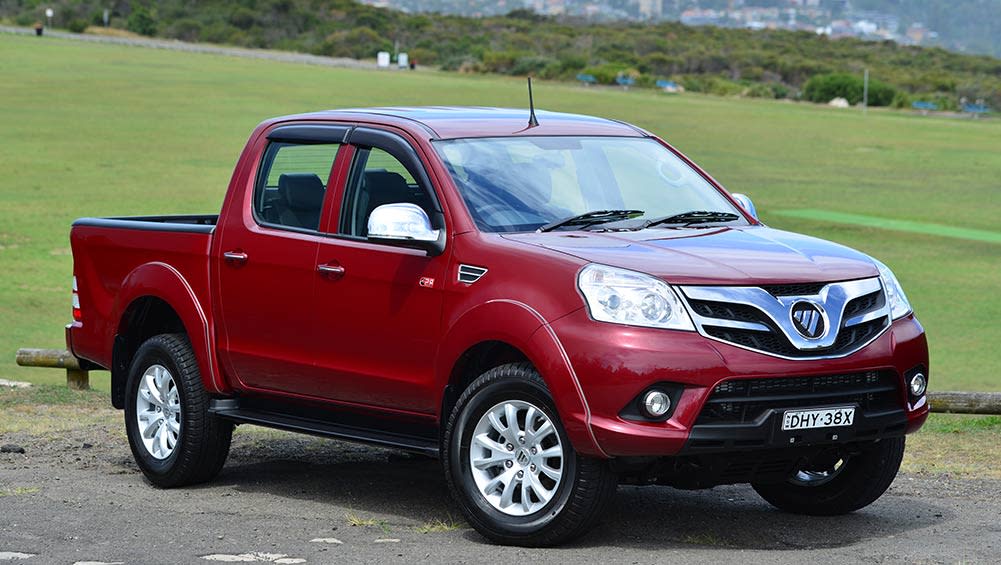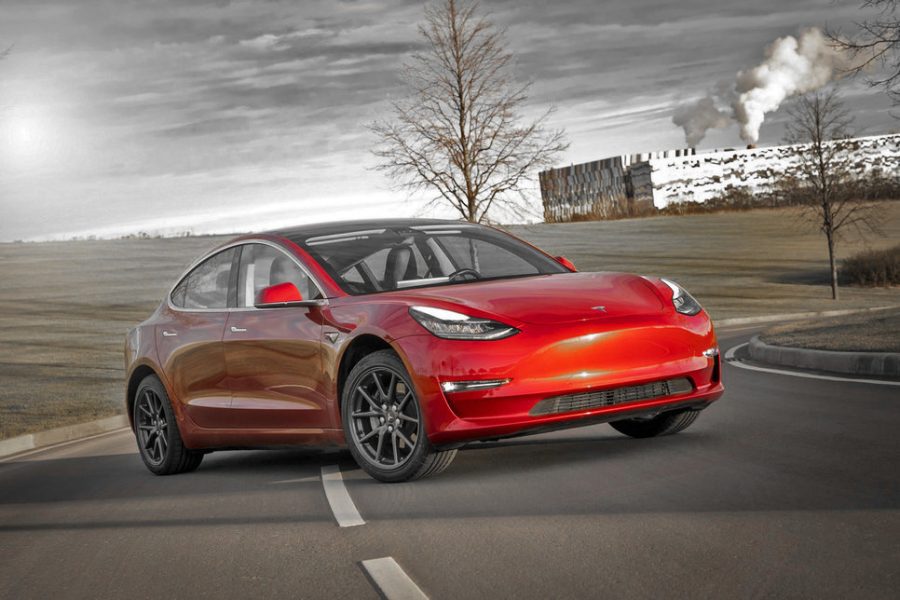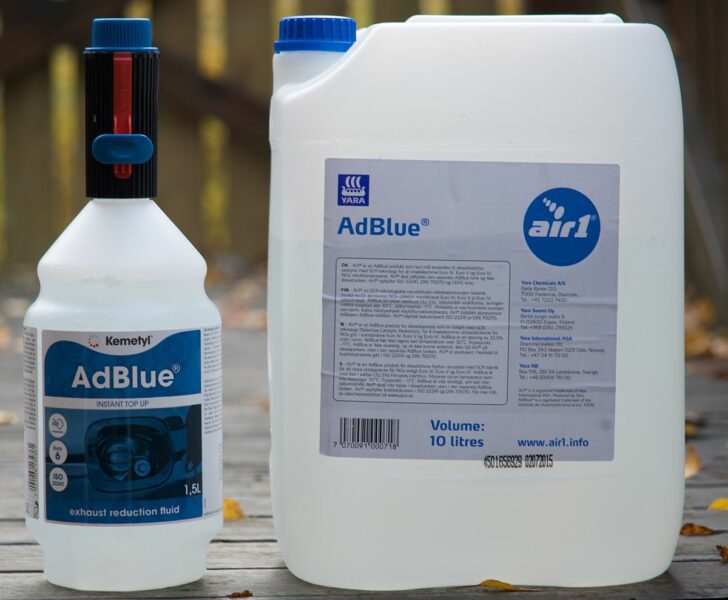
Foton Tunland 4X4 double cab review 2017
Content
- Does it represent good value for money? What functions does it have? 7/10
- What are the main characteristics of the engine and transmission? 8/10
- Is there anything interesting about its design? 7/10
- What safety equipment is installed? What is the safety rating? 6/10
- How practical is the interior space? 7/10
- What is it like to drive? 7/10
- How much fuel does it consume? 7/10
- How much does it cost to own? What kind of guarantee is provided? 7/10
- Verdict
- Is Foton's Tunland the best family work truck? Tell us what you think in the comments below.
Markus Kraft is road-testing and reviewing the new Foton Tunland 4X4 double-cab vehicle, along with performance, fuel consumption and verdict.
When I told my mates that I would be testing the Foton Tunland, some snorted and laughed at their craft beer from their noses in not-so-feigned shock. "Why don't you save yourself the trouble and just write about another HiLux, Ranger or Amarok?" They said. The idea of me supposedly risking my skin in a Chinese double cab car that had been heavily criticized in the past for poor build quality and dogged by concerns about the car's safety got these guys excited.
“Is your life insurance up to date?” one guy joked. Yep, funny. Well, joke on them, because this latest generation Tunland is a well-built and inexpensive car with a double cab, a darn good Cummins turbodiesel engine and a selection of other high quality components thrown in for good measure. But it's not all good news - there are some security issues. Read more.
| Tunland 2017 Photos: (4X4) | |
|---|---|
| Safety Rating | - |
| engine's type | 2.8 L turbo |
| fuel type | Diesel |
| Fuel efficiency | 8.3l / 100km |
| Landing | 2 Places |
| Price from | $13,000 |
Does it represent good value for money? What functions does it have? 7/10
Tunland manual only available 4×2 single cab ($22,490), 4×2 single cab ($23,490), 4×4 single cab ($25,990), double 4×2 cab ($27,990) or double cab 4. ×4 (US$ 30,990 400) that we have tested. Single cabins have an alloy pallet. The metallic paint on any model costs an extra $XNUMX.
Build quality, fit and finish have been improved well beyond expectations.
For a vehicle firmly positioned in the budget end of the price scale, the Tunland's interior has quite a few cheeky little extras packed into what, at first glance, appears to be a standard workhorse inside and out anyway. It has tilt-adjustable leather trim, a steering wheel with Bluetooth controls, an audio system, and cruise control.
The Tunland audio system plays MP3 files and CDs. There is an additional mini-USB port next to the CD slot. Music can be streamed from Bluetooth enabled devices. Air conditioning, power windows, power door mirrors (with defrost function) and remote two-stage unlocking are standard on the Tunlands.
All seats in the double cab are upholstered in leather, and the driver's seat is adjustable (manually) in eight directions.
There's plenty of storage space: a roomy glove box, cup holders, pockets in the doors and seatbacks, and a few handy little places for knick-knacks.
Standard features elsewhere in the dual cab include daytime running lights, 17-inch alloy wheels, a rear bumper with parking sensor and fog lights, and a tire pressure monitoring system; Convenient for off-road travelers.
According to Foton Motors Australia General Manager Alex Stewart, our test car was one of the latest 2016 models to feature all-round disc brakes and stability control, as well as a Euro 4 emission standard engine. The updated model, expected in the middle of the year, will be equipped with a Euro 5 engine, "but with the same exterior and almost the same interior," said Mr. Stewart.
Accessories include just about everything you could ever want from ute, from clear hood protector ($123.70) and full recovery kit ($343.92), to bullbar ($2237.84) and winch ($1231.84). USA). Foton has a Tunland equipped with most if not all available accessories as an example of what a fully equipped Tunland looks like, and it looks damn good.
What are the main characteristics of the engine and transmission? 8/10
The Tunland is powered by a 2.8-litre Cummins turbodiesel engine with 120kW at 3600rpm and 360Nm of torque at 1800-3000rpm mated to a five-speed Getrag manual transmission. These are two reputable components made by the best of the best in their fields: engines and transmissions.
BorgWarner, another industry leader (including powertrains), has built a two-speed transfer case for the Tunland 4×4. All Tunlands in Australia have Dana axles and differentials; behind LSD.
Is there anything interesting about its design? 7/10
Tunland looks good but not impressive; like a double cabin of the zero era, not a modern one. And you know what? There is nothing wrong with this journalist because it is easy to fix. The Tunland is not unlike the BT-50s of recent years in the sense that once you drop the bull bar on the regular front end (with its Wi-Fi symbol rotated 90 degrees by the Foton logo), then all is forgiven.
Elsewhere, the Foton is a softer-edged beast than some of its contemporary brethren, with rounded headlights flowing into a truck-like rear end, but it retains a solid, old-school appearance.
Inside, the Tunland is neat, tidy and roomy. It looks ready for day-to-day duties - whether it's the workhorse of the workplace, the daily driver, or the family carrier. There are gray plastics throughout, but there are nice touches in the cabin, like leather-trimmed seats and woodgrain panels.
What safety equipment is installed? What is the safety rating? 6/10
Tunland has a three-star ANCAP rating and was last tested in 2013.
There are airbags for the driver and front passenger as standard (there are no side frontal airbags); height adjustable, front seat belts with pretensioners, as well as ABS and EBD. Our test car also had the ESC package, which included all-round disc brakes.
There is only a lap belt for the middle rear passenger and no curtain airbags.
There are no upper child seat anchorage points in the rear seats, Mr. Stewart said, but they will appear in the 2017 model. Cars Guide. For 2016 models, only optional seats that do not require these top cable points should be used.
These security flaws are significant, but it looks like Foton plans to fix them in the next generation Tunland.
How practical is the interior space? 7/10
Tunland remote entry is two-stage: the first press opens the driver's door only; a second press opens other doors - it can be annoying when people struggle to get into a car during a heatwave, and there's an almost comical series of ill-timed attempts to open doors and press buttons.
The cabin is spacious. Build quality, fit and finish exceeded all expectations. One or two buttons feel flimsy, and the side mirror adjustment button is tucked away on the right dash behind the steering wheel; quite uncomfortable to see, reach and use.
The air conditioner turns off by default every time you restart it, which is a little annoying, especially in the extreme heat during which part of this review took place.
The seats are comfortable enough without going beyond the call of duty; The front seat bases are too short for tall people, and the extra lateral support is welcome.
Headroom and legroom are ample, both front and rear, although rear-seat passengers are forced into a knee-deep upright position; however, they should get used to it if they ride in utes for a while. The number of cupholders on the front center console reaches two.
The double cab Tunland has a payload of 1025kg, a maximum braked payload of 2500kg (1000kg less than most other models) and 750kg without brakes.
Its cargo area is 1500mm long, 1570mm wide (1380mm internal width at floor level; 1050mm internal width between wheel arches) and 430mm deep. The tray has four attachment points in each inner corner and a polyethylene liner that protects the top "edge" of the tray, which is a big bonus.
What is it like to drive? 7/10
The double cab Tunland is 5310mm long, 1880mm wide (excluding side mirrors), 1870mm high and has a 3105mm wheelbase. Curb weight is listed as 1950 kg.
In other words, it's a big car, one of the biggest models in Australia, but it doesn't feel like such a bulky beast to drive.
The Tunland has a wide stance and sits well on the road, only showing that controlling sway when really thrown into corners. Its hydraulic steering is quicker and lighter than you'd expect from a hefty car at this price point, though it does have some play.
The Cummins engine is a real cracker; brash and responsive. We had fun with him in city traffic, on highways and back roads, turning him on, giving him a kick, listening to his growl. When managed sensibly, it retains its fury throughout the entire rev range.
The XNUMX-speed manual transmission is a high-speed transmission; smooth and fun to use. We had a few chances at first, but we quickly got used to the drastic action.
The Tunland has double wishbones and coil springs at the front and leaf springs at the rear. The setup felt solid, but nothing out of the ordinary for Ute. All in all, the ride and handling came closer and closer to the double cab cars that cost at least $10,000 more than this one.
Our test car was shod in Savero HT Plus 265/65 R17 tires, which were generally good on bitumen, gravel and off-road, but for off-road we would go for the AT.
Visibility is generally good, with the exception of a massive A-pillar and window shield that obstruct the driver's view, and a shallow rear window slit, which again is not unusual for drivers around the world. (Window guards are dealer-installed accessories.)
Off-road, the Tunland is more than capable. It has 200mm unloaded ground clearance, a BorgWarner dual-range gearbox and an LSD in the rear.
We rode it through a couple of crossings through shallow water (the air intake is high up in the engine bay), over a patch of jagged and stepped knee-high rocks, along a heavily broken bush trail, over sand and along eroded dirt roads. . Some of them were very slow and complex. Tunland handled everything with ease.
Operating the 4WD modes is easy enough: the driver uses the buttons just in front of the gear lever to shift between 4×2 High and 4×4 High at speeds up to 80 km/h. You must stop the vehicle to enable low range.
The underbody protection includes a sheet steel pan protection which is standard on the Tunland 4×4.
Warranty and safety rating
Basic Warranty
3 years / 100,000 km
guarantee
How much fuel does it consume? 7/10
The Tunland has a 76-litre fuel tank and consumes 8.3 l/100 km (combined cycle). We recorded 9.0 l/100 km after 120 km of city traffic with frequent stops, mud and some off-road.
How much does it cost to own? What kind of guarantee is provided? 7/10
100,000 year/XNUMX km warranty including roadside assistance.
Verdict
The Tunland is a damn good value proposition, and it's the best double cab budget car out there, but its less than perfect set of safety features weighs on its appeal.
If these shortcomings are removed from the updated model, then it will most likely become even stronger in the highly competitive home appliance market.
Is Foton's Tunland the best family work truck? Tell us what you think in the comments below.

